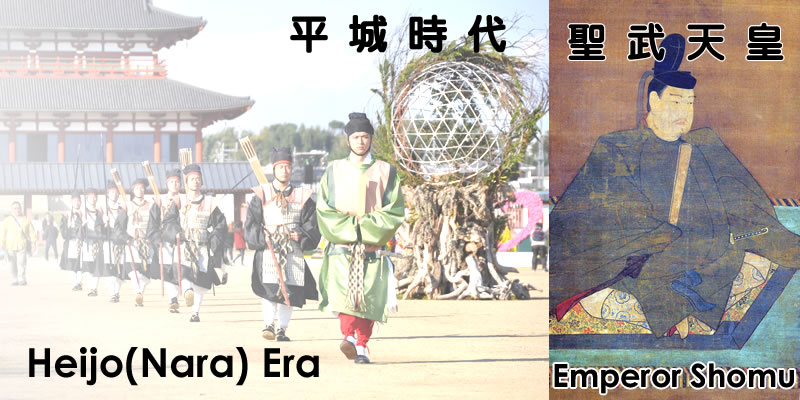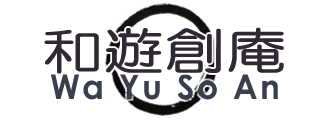
In 710 the Empress Genmei established the capital in Nara, which is called “Heijo-kyo“. In 794 the Emperor Kanmu moved the capital to Kyoto, which is called “Heian-kyo”. And this period, 84 years when the Heijo-kyo capital city was in Nara, called Heijo era or Nara era.
The noble, statesman, “Fujiwara no Fuhito” who was a powerful member of the imperial court of Japan during Nara era, played a important role in the establishment of the new state law “Taiho Ritsuryo” and the new capital “Heijo-kyo” in Nara. The capital and the state law was modeled after 長安(Chang’an,Xi’an), the capital city of the 唐(Tang dynasty) China.
The Heijo-kyo was established as a national political city. The imperial palace was built in the capital, and most of the residence were from imperial families and nobleman and statesman, high class people. And during this Heijo-era, “Tenpyo Culture” was flourished around the Heijo-kyo. It was the Nobleman culture and Buddhist culture introduced from China.
Heijo-Era, the time of the Emperor Shomu, who built the Todai-ji temple.
In 701, Obito-no-miko, son of the Emperor Monmu was borned, later he became the Emperor Shomu.
In 701, “Taiho Ritsu-ryo” Taiho Code enacted. It was the administrative(Ritsu) and criminal(Ryo) code of the Taiho era modeled on the codes of the Chinese T’ang dynasty, China.
* “Ritsuryo” (律令), is the historical law system based on the philosophies of Confucianism and Chinese Legalism in Japan. Ritsuryo-Kokka is the nation under Ritsuryo codes.
– In 707 the Emperor Monmu died young of an illness. And his son, Obito-no-mikoto was still little child, thus his mother ascended the throne as Empress Gemmei.
– In 708 Wado-kaichin(和同開珎) , the oldest official Japanese coinage, has been minted on order of Empress Genmei. And also Empress Genmei ordered to move the imperial capital from Fujiwara-kyo to Heijo-kyo, and it was established in 710 in Nara.
– In 724 Obito-no-mikoto became an adult and ascended the throne as Emperor Shomu.
★ Power struggle within Imperial family: The Minister of the Left(Sadaijin) Prince Nagaya
vs
* Sadaijin: The minister of the left, was the Senior Minister of State, one of the highest government position.
* Fujiwara clan is a powerful family group which dominated the imperial government in Nara and Heian period by shrewd intermarriage and diplomacy.
And Emperor Shomu has a mother and a wife from Fujiwara clan.
In 728 Emperor Shomu lost his baby son, the prince “Motoi-miko” he deeply loved. Fujiwara Clan struck, accused prince Nagaya as a rebel unreasonably. Prince Nagaya was forced to commit suicide days later.
* Prince Nagaya did not think well about ascending the throne to Motoi-miko in future, as the mother is from Fujiwara Clan.
★The epidemic of smallpox virus(天然痘)occurred: Fujiwara Clan, four bothers died because of virus and also many government officials died too. The people were suffered and were frightened because the people believed that this epidemic was caused by the Nagaya’s Curse as Price Nagaya was forced to die unreasonably.
The administration of The Minister of Right(Udaijin), “Tachibana-no-moroe” – The appointment of Kibi no Makibi and Genbo who were the representatives in the Japanese mission to Tang China(Kento-shi).
Because of the epidemic, many government officials died and Fujiwara four bother died and then Fujiwara Clan’s political power declined. Meanwhile, Tachibana-no-moroe was appointed as the Minister of Right, carried out a new personnel administration. As building the nation with modeling on the Tang Dynasty China, he appointed the personnel who understood well about China Tang Dynasty regardless of social position. And Kibi no Makibi and Genbo were appointed to important positions, despite lacking social status.
★Fujiwara no Hirotugu rebellion:
In 739 “Fujiwara no Hirotugu” ,the descendant of Fujiwara four brother, who were demoted to Dazaifu(Kyushu) because of bad behavior, dissatisfied with the new personnel administration and rebelled against the government at Kyushu but was defeated by the government forces.
Those national difficulties such as epidemic virus, earthquake, power struggle, rebellion, occurred since the Emperor Shomu’s enthronement. The Emperor Shomu missed his way, and he tried to move the capital couple times but it did not work well. In such difficult time, the Emperor Shomu believe the Buddhism idea of protection of the nation. He took Buddhism power as a government policy to protect and maintain the nation.

コメント